As the UK government has instructed the nation to stay at home and only venture out for specific, essential reasons in light of the Coronavirus (Covid-19) situation, many of us are being encouraged to park our cars if we can. Some owners of Toyota hybrids might be wondering what will happen to their car during long periods without use, particularly when it comes to the level of charge in the batteries.
The reassuring news is that no difficult car maintenance is necessary. However, there are some tips that, if followed, can help ensure your Toyota remains in tip-top condition during an extended layoff.
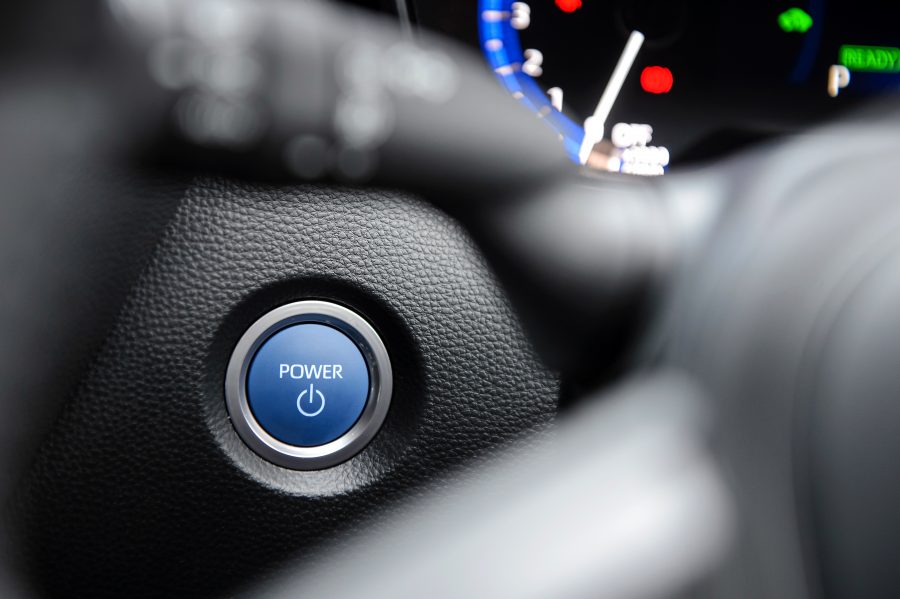
To recap, Toyota hybrids generally contain two batteries: a 12-volt battery (which powers systems such as the headlamps and audio) and a high-voltage hybrid system battery (which supplies the power to start the combustion engine and drive the electric motors).
The simplest way to maintain charge in both of these batteries is to simply go through the normal start procedure: press the ‘Start’ button with your foot on the brake and ensure the ‘Ready’ light is illuminated on the dashboard (you don’t have to keep your foot on the brake thereafter, but ensure your vehicle’s transmission is in ‘Park’ and the parking brake is engaged).
We recommend you put the car in ‘Ready’ mode for about 60 minutes before switching it off again and repeat the process at least once a week, providing you can carry out this procedure while adhering to the government’s advice regarding social distancing and Coronavirus (Covid-19). Please do not leave your car unattended when it is in ‘Ready’ mode.
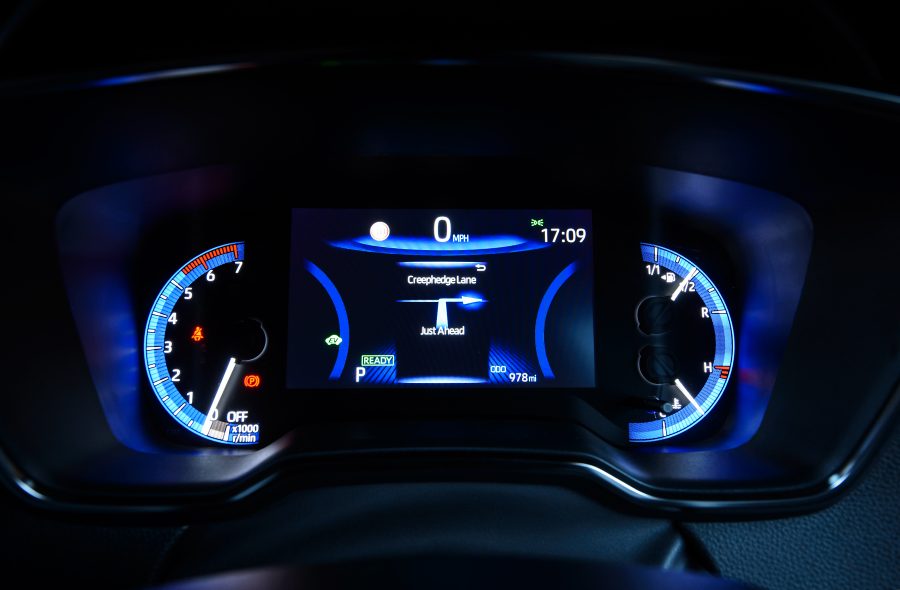
During the time that that car is in ‘Ready’ mode, you may hear and feel the internal combustion engine kick in; this is a normal part of the self-charging process. You might be tempted to switch on the radio to pass the time, or turn on other systems, but bear in mind these will consume small amounts of electrical power so it is preferable to leave them off.
Ensure the handbrake is on; there’s no need to go for a drive, although we must stress that this procedure should take place in a well-ventilated area – something to consider if you park your vehicle in a garage.
What if my Toyota isn’t a hybrid?
Our petrol and diesel cars only have a 12-volt battery, which provides the power to start the engine in addition to the other systems mentioned above. Regular start-up of the vehicle on conventional petrol and diesel engines needs approximately 20 minutes of running to put back into the battery what you remove on start up, so to maintain this battery we would suggest 60 minutes of running at least once a week.
Is there anything else I need to do?
Whether you own a hybrid or a Toyota equipped solely with an internal combustion engine, there are a few other easy car maintenance points that can ensure your Toyota hybrid remains healthy and happy during an enforced hibernation. Again, please adhere to the latest government advice regarding social distancing.
- Check the tyre pressures are fully inflated to the recommended level and top-up if necessary. It can be a good idea to repeat this process when you first drive your car after a long period of inactivity.
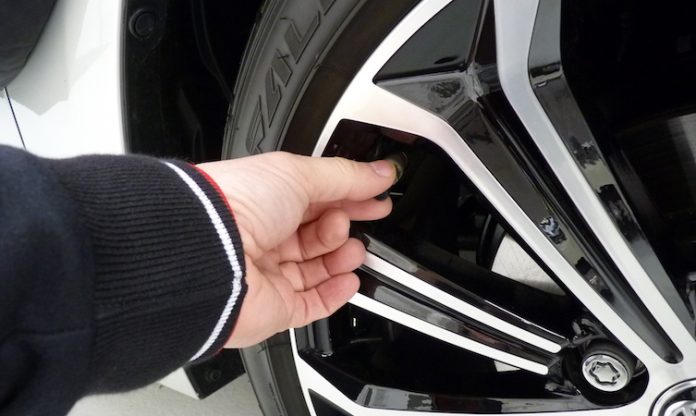
- Clean the car thoroughly inside and out. If you are storing your car in a garage, make sure the vehicle is completely dry before you put it away.
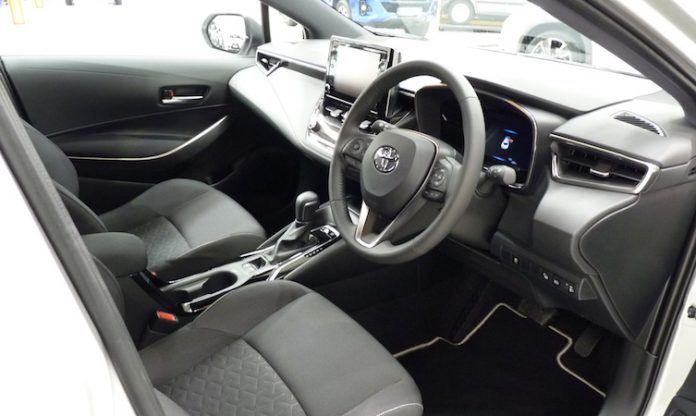
- If you do plan to store your car in a garage, ensure the chosen storage area offers plenty of ventilation. If the space is secure, you could consider opening one of the car’s windows a small way to ventilate the interior. If you do this, you might have to change your car alarm’s setting to prevent it setting off the intrusion sensor – please consult your car’s manual for more information.
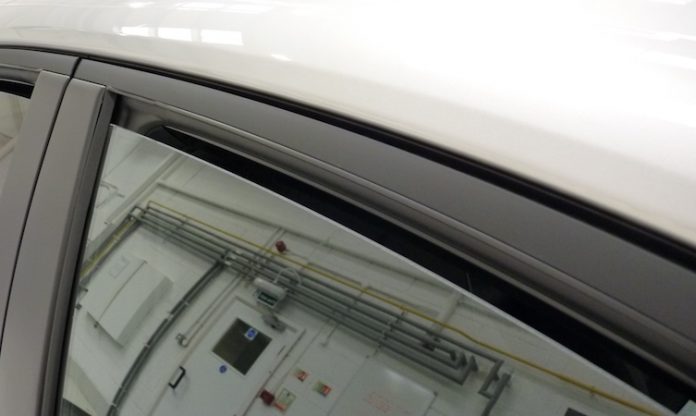
- It can be beneficial to leave the vehicle with the parking brake disengaged to prevent the brakes from binding, but only do this if you are certain the car is on level terrain and isn’t going to move. Ensure the transmission is set to ‘P’ for park and place wedges or chocks, if you have them, under the wheels.
- If you have a 12V battery trickle charger, or a solar panel charger, and are confident using them, then these are a good option to keep the battery fully charged while the vehicle is stationary for a period of time.
- If your vehicle is equipped with smart entry and start but the system isn’t operated for a long time, a battery-saving function will automatically be activated to prevent the electronic key battery and the 12-volt battery from being discharged. Battery depletion in the key is minimised by stopping the electronic key from receiving radio waves. On many models equipped with this system, it is possible to manually put the key into battery-saving mode, so please consult your car’s handbook for more information. If you aren’t planning to drive your car for a long time, consider putting the smart key in a safe place and not carrying it around with you in your pocket. This will prevent the car from ‘waking up’ unnecessarily should you happen to walk near it in your garage or driveway.
- If the vehicle will be kept on private property (such as inside a garage) for the duration of its storage, you could consider applying for a Statutory Off Road Notification (SORN). This informs the DVLA that the car is off the road and you will receive a refund of any remaining full months of tax. However, you won’t be able to drive your car legally until you tax it again, so it is only advisable if you are positive you won’t use your car for a long time. You can read more information about how to SORN your car here.
Read more Toyota GB’s latest statement on the Coronavirus (Covid-19) situation
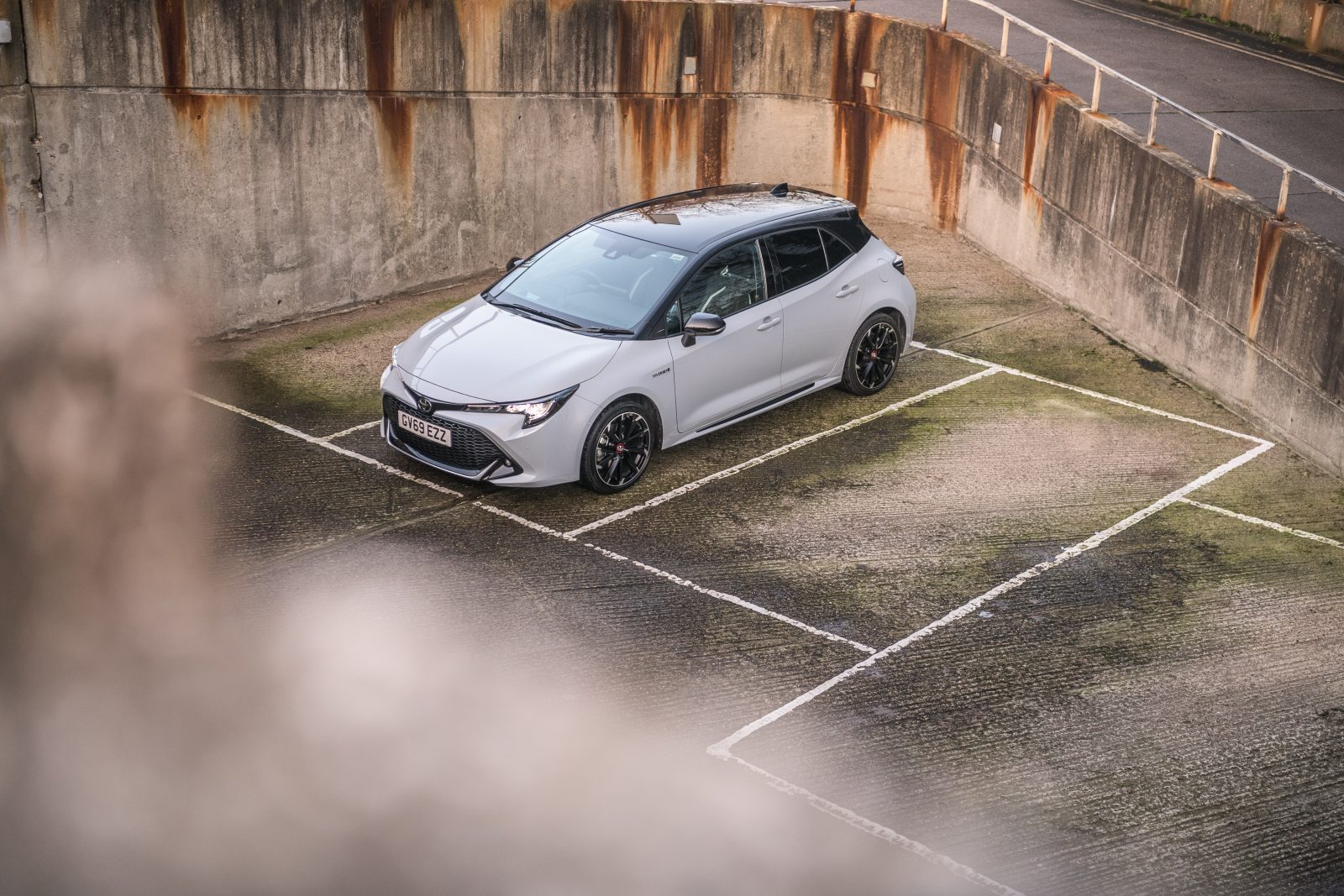

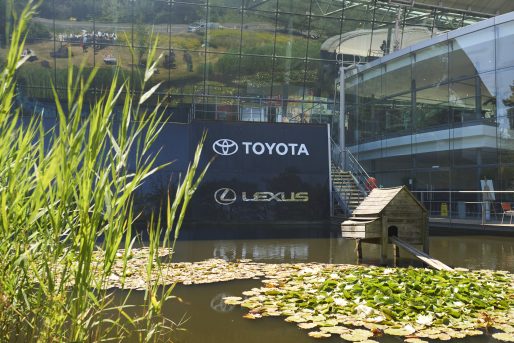
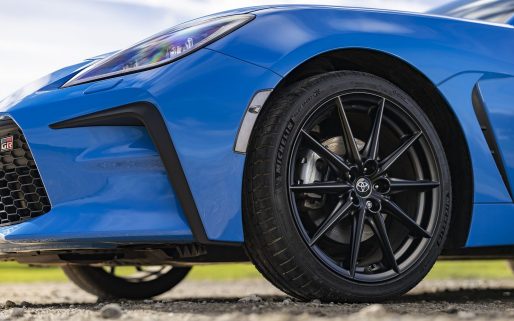
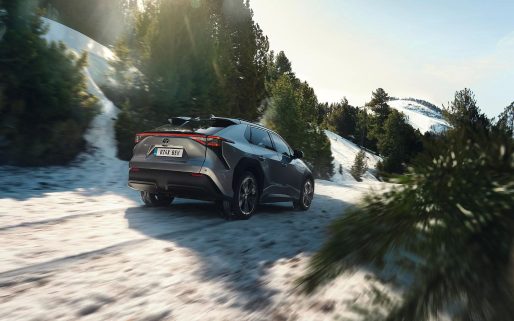
Just had AA to restart my new (Oct 2020) Yaris hybrid. Not using much because of lockdown. Can I use a trickle charger connected to the + in the fuse box and earth on engine mount?
Hi Joyce,
Thanks for your comment.
We would recommend following the instructions that come with the trickle charger for where to connect this to the battery.
Thanks.
Thanks for the reply. The battery instructions refer to connecting to the + and – . The question was raised because the car is parked in the garage, the battery is under the rear seat and it is not easy to access. The jump start connections under the bonnet are relatively easy to access, so provided all usual precautions are taken, is there any reason we shouldn’t use these?
Hi Joyce,
No, there is no reason you shouldn’t use these.
Thanks
My toyota prius hybrid from year 2017
The problem is 12 volt bettery dies within 10 minutes.,when I leave ignition on to charge my phone and to get some heat on
Is it normal?
Is there any solution for it?
Please help
Hi Raja,
Thanks for getting in touch.
We would recommend contacting your nearest Toyota Centre in order for them to check the battery.
They will be able to determine if there are any faults that need to be rectified.
You can find your closest dealer here: https://www.toyota.co.uk/forms-v2/forms?tab=pane-dealer
Thanks.
Is the 12v battery in a Toyota RAV hybrid a AGM type battery? Just ordered a battery charger which has a AGM charging option.
Have owned many Toyota 4×4 over the last 30+ years including 4 RAVs. Most recently a 2018 RAV hybrid with no battery problems. Ordered a new RAV on Monday and just had notification on MyToyota to say it has arrived at the dealer today . Just want to be able to monitor battery and charge if needed till lock down restrictions ease.
Thanks.
Hi Keith,
Thanks for getting in touch with us, and congratulations on your new RAV4!
Could you please provide us with your reg? We can then look into this for you.
Thanks.
Sorry dealer hasn’t registered car yet. It’s a RAV Dynamic 4WD.
Ok, no problem. We believe it does not have an AGM battery, but it’s best to check with your centre as they’ll be able to confirm this.
Thanks
Hi,
I have a Toyota Prius Hybrid (2007) and mostly take only short, local journeys. The battery recently needed recharging due to lack of use so I am considering buying a solar panel charger.
I have no idea which one would be best – are you able to recommend some? Also, I keep my car under a car port and so I’m not sure if the panel would get enough sunlight?
I’m doing an additional half hour drive a week as well – is that long enough? I’d rather drive it than leave it running.
Many thanks in advance for your help.
Christina
Hi Christina,
Thanks for getting in touch with us.
We do have a Toyota approved solar trickle charger, and we would recommend contacting your nearest Toyota Centre to order one.
These do not need direct sunlight to function, but they are more effective when they do receive this.
Regarding whether 30 minutes of driving is enough, we recommend in our blog to leave the vehicle in ‘READY’ mode for 60 minutes at least once a week. This may mean that 30 extra minutes of physical driving might be enough, but there is no way to guarantee this, and this is also dependent on many variables such as terrain, speed and other factors.
Thanks.
Many thanks for the swift reply. Regards C
My concern is will the car start if I leave it at an airpoet car park or similar for 2 to 3 weeks? It currently discharges the small batter very quickly unless we drive it for around 2 hours a week. Not very environmentally friendly having to run a petrol engine for 60 minutes a week just to ensure it will start. I’ve never had this issue with another car and our 1 series petrol can go months without being run and will start.
Hi Mark,
In this situation, we’d recommend using a solar trickle charger to keep the 12v battery topped up. You can get these from your Toyota centre.
Thanks
Hi I have a 2021 Yaris Hybrid. Can I use the cigarette lighter socket to charge the battery, I have purchased a solar charging panel from Toyota.
Hi Terry,
We would recommend following the instructions in the manual for the solar charging panel.
Thanks.
So, I am now a little confused. What is the state of play with the 12V battery on the 2024 Corolla Touring Sports? Is drainage a problem? I am aware that the vehicle I test drove had to be started with a booster pack. My vehicle is a 2024 1.8 hybrid with a dealer fitted front & rear Nextbase dashcam. I am looking at solar trickle chargers – is this likely to be of use and can I plug it into the OBD port.??
Hi Glenn, thanks for getting in touch.
Those who make short and infrequent journeys sometimes experience issues with the 12V battery. This can be counteracted via a trickle charger which can either be connected directly to the battery or to the OBD port. There are a few different options online, or your local Toyota Centre can also assist.
Thanks,
Toyota UK
Parked up in my corolla 2020 hybrid with radio on 12 volt battery died told by AA not to park with ignition in auxiliary mode as this will flatten battery in a few minutes, is this true
Hi Graham,
As with any vehicle, using electrical systems drains the battery, especially if you have only been doing short trips and leaving the car stationary more than usual, as the 12v battery doesn’t get the chance to fully charge.
Thanks
bought my corolla new in 2019 has 4465 miles on clock , with pandemic hardly used it , 12 volt battery is dead, what is happening, will my guarentee be honored ?
Hi Don,
Thanks for getting in touch. Sorry to hear this has happened. Vehicles are fitted with electrical systems, like clock and alarms, that can drain the 12v battery, even when the car is switched off. If the vehicle is not driven enough, and the battery is not recharged, it may become flat.
Our manufacturer warranty covers the battery if the issue is related to a manufacturing defect, but if the fault is caused by an external factor, like lack of use, it won’t be covered.
Please contact your nearest Toyota centre for further assistance.
Thanks
I took delivery of a new Corrolla 2.0L Excel 5 Door touring sports in June of last year. The 12V battery died twice in quick succession over the last couple of months. The vehicle was started by the AA who after the second stated that the battery was US and needed replacing. The car was driven to and left with the dealership who pronounced the battery was fine, but that the car needed to be driven more. The car was driven for three trips last week but this afternoon the battery was dead. Surely Toyota can not expect their customers to spend an hour each week sitting in a stationary car just to ensure that the 12V battery is kept charged. It is neither fair or reasonable to suggest so but points to a serious lack of forsight when the car was being designed with regards to the quiesient current required to keep the electronics alive. It is not unreasonable to expect to be able to park a car up for two or three weeks whilst on holiday and expect that there is sufficient power to start the vehicle.
Hi Robert,
Thanks for your comment. We’re sorry to hear this.
The guidelines the government has set clearly have consequences, and impact us all in some way. In many cases, not being able to drive a car long distances may have a negative impact regarding the charge of the 12v battery. As with any combustion powertrain, this does not give the 12v battery adequate time to recharge. We’re advised by the AA this is a major issue and they report a significant number of callouts from owners of all brands due to this problem. While we’re not alone, we realise that does little to solve your issues, but this is a national issue, and unrelated to the manufacture of the car.
The ideal situation would be to take longer, more frequent journeys, but we appreciate that this is not possible at the current time.
Using a trickle charger can help to maintain the charge in the battery and, although this is an optional route, it is easily achieved by connecting the charger straight to the 12V battery and can offer some peace of mind, particularly when a vehicle is left standing for long periods of time. This can be purchased via your nearest Toyota Centre.
Thanks.
Thanks for your reply and comments. However what does concern me is your comment that we ‘should take longer more frequent journeys’. I am retired and no longer take frequent long journeys and have chosen to keep a new car for the safety and security that usually comes with new product. I have had two Auris hybrid cars over the last three years and both had extended periods of being inactive over two months whilst we were out of the country, neither car had battery problems. My Corrolla was initially ok but suddenly started to fail since February and although we have had the Gov lockdown this has not impacted greatly on our use of the vehicle. I also think that to resorting to connecting a trickle charger to the battery or jump start point in the fusebox is not something that one could be reasonably be expected to do on a weekly basis. I fully accept that if the car was going to be laid up for several weeks then this is an option to be considered. A thought that has occurred to me is that a software fix may be to insert a routine into the vehicles operating system that allows for a short charge from the HV battery on a daily basis to make up for the daily drain. I appreciate that care would have to be taken not to discharge the HV battery to a point where it would not spin the petrol engine up but at least the standing time would be increased.
Hi Robert,
Thanks for your reply.
If you are worried that there is a fault with your battery, your nearest Toyota Centre will be able to explore this further for you.
Fundamentally, our commitment to all our customers is the 5-year warranty. If the reason you have been unable to start your car is the direct result of a manufacturing defect, then we’ll do all we can to put things right. Included in that promise is the 12v battery, and if it’s reported to us as being faulty by a Toyota centre, we’ll rectify this. If it’s a result of lack of use, this will not be covered.
Thanks.
Hi Robert, you make an excellent point and i think this is a major problem for Toyota, which they are clearly trying to ignore. I have spoken to many people with other cars who have left their cars for weeks with no issues at all. A software update to allow the 12v to take charge off the HV would be a great idea, but until Toyota admit that there is an issue here, that will not happen. As i said in my first post, i feel a recall coming…
Hi there,
Thanks for your reply.
As previously explained, there has been an increase in issues with the 12V battery across the automotive industry and this is in correlation with the reduced travel advised during the national lockdown. This is not unique to Toyota, nor to the hybrid system.
A trickle charger can be used to maintain the battery health in the future.
Thanks.
As of January 2023 (and my Yaris was brand new March 2022) this issue continues. My car was on drive for less than 2 weeks while we were away over new year. I drove it when we got back for a short journey, and all seemed fine. The next day it would not start. I was told by Toyota service that I should ensure that the car is driven a fair way at least once a week and I should get a “jump pack” should this happen again. This issue has obviously been known for a long time, but neither having a “jump pack” or being informed that the car/battery HAD TO BE driven a fair distance each week were advised to me BEFORE I purchased it, or even after!!! And what is a fair way? Also, since being “jumped” by roadside assistance with his over £300 jump pack my battery indicator (after a fast accelerated journey) has actually filled/reached all the bars, never seen that before! This issue needs sorting, either a software upgrade or supplying all hybrid drivers with a reliable jump pack, should be sold as standard with ALL hybrid cars if they cannot hold charge long enough for someone to go on holiday. What happens if parked up at an airport for 2-3 weeks? So much for saving the environment, toxic batteries, not being able to park up, having to use car for unnecessary journeys just to charge the battery, plus also I’ve just learned that touching certain parts of the engine can deliver an electric shock that can kill! As you can tell I am not happy.
I have just read this thread with interest as my 2021 RAV4 failed to start this week after returning from a 7 day holiday. The RAC came and told me the 12v battery was flat. My local Toyota centre has now investigated and has suggested that the home (granny) charger may be faulty. It is with them currently while further tests and recall updates are being carried out. I wonder if one of the updates are as a result of the excellent suggestion for the 12v battery to be charged via the HV battery automatically. No one told me, when I bought the car, that I would need to sit in it for an hour a week in order to keep the battery topped up or that I may be stranded at an airport or anywhere else because the battery is likely to fail
Hi Toyota, I was going to leave it as I had made my observation and possible idea of a fix. However you appear to be fixated in blaming this problem on Covid 19 issues. In my case the vehicle is being used regularly, but as explained we are retired so it is not daily use. My original Auris Hybrid did around 1000 miles in its first year during which I spent two months in France and a further month in Lanzarote with the car being left parked up. My Second Auris did slightly more mileage and in 2019 that car was left parked for 9 weeks and 6 weeks during the year. I have not had a battery issue until now. It may be that I do indeed have a faulty bettery but my dealeship has already informed me that Toyota will not accept a warranty claim on my vehicle as the mileage is too low. Thankfuly my dealer has offered to investigate and resolve this issue regardless of your help. I further note that you state this issue is not covered by your warranty through lack of use. Perhaps you would like to clarify what you deem is lack of use and perhaps this should be stated in your sales literature because as a pensioner I would need that information as part of my purchasing process as I am not a taxi or travelling sales executive.
Hi Robert,
Thanks for your reply. We’re glad to hear that your Toyota Centre are investigating this further.
Ultimately, it is the inspection undertaken by our trained centre technicians that allows them to determine whether the fault is caused by a manufacturing defect, which is covered by warranty, or not.
If you would like to discuss your situation in further detail, our Customer Relations team will be best placed to do so with you.
They can be contacted here: https://www.toyota.co.uk/help-centre/email-us.
Thanks.
So why do you not inform prospective buyers of possible battery drain and failure to start as a precursor and condition of purchase?
Hi David, thanks for contacting us.
We would recommend seeking the support of our customer relations team. They can be found here: https://fal.cn/3ABcF
Thanks.
Hi Toyota, After my post at 18:15 31 March I tried to find the original comments that ‘Shnookumshnum’ had made by trawling through all 280 comments on this subject; I was both shocked and astonished by the amount of comments and tales of woe. Again whilst fully accepting that leaving a vehicle for a long length of time will result in a flat battery it is not hard to separate these instances from others, like me, who are using their vehicles but still suffering from this issue.
My working life was spent in the electronics industry and I have been involved with the development of battery chargers and capacitance testers for aircraft batteries; Design and specification of 24V Lead Acid chargers and power supplies for fire alarms, smoke heat detection and ventilation systems. Since retiring over seven years ago I have switched off (no pun intended) and no longer give any thoughts to electronic and software design theory. So I will keep it simple.
In one of the replies to a user, a quiescent figure of 80ma was given as the current required by the car when the car was locked up and idle. Using simple math you only have to divide the 12V battery ampere hour rating by this amount to arrive at a point where the 12V car battery would be totally flat. 48/0.08 = 600Hrs 600/24 = 25 Days. However this would destroy the battery as no battery should ever be discharged beyond its design point. A more realistic cut off point equates to around 16 days maximum to red line point on the battery.
The calculation also assumes that the battery is in perfect condition and fully charged. However a battery that is abused by having deep discharges and rapid recharging will very quickly suffer from lower capacity and shorter overall life.
There is a lot more technical information readily available on the web saving me from stating it here.
Again, from the comments it would appear that some batteries have been discharged well below the critical safety level and are theoretically damaged, therefore requiring replacement.
I am now also concerned on how the 12V car battery receives a charge from the HV system. If the charger is a constant voltage charger as is standard with automobile alternators a partially discharged battery will be topped up and maintained with no issue. However a severely discharged battery will overheat with damage being caused through mechanical and or chemical processes.
If the charger is a constant current and set for a trickle charge a flat battery will be brought back on line more gently however this will take a greater time.
The only safe option would be to have an intelligent charger that would trickle charge a flat battery until it is safe to resume full charging. I doubt that forms part of the vehicle charging module as it would also have to cope with the varying 12V loads such as wind screen wipers and heated seats.
In my initial post I mentioned that if it were possible to install a software patch to trickle charge the 12V system from the HV system: whilst the car was at rest the delivered current would only need to be 80ma plus the required charge.
Toyota are making the statement that damaged batteries will not be covered within their five year warranty if the failure is caused by lack of use.
The question here is it reasonable for Toyota to say that a car should not be parked for a fortnight in an airport car park whilst the owner is on holiday.
With regards to faulty materials, I doubt that the battery is initially at fault but that the design process did not allow for a sufficiently large ampere hour battery to be fitted to the vehicle to allow for extended parking. I suspect that this may be down to the Courts to decide if the design is not fit for purpose when people start rejecting their cars.
My wife has a 2020 Yaris and has called the AA 7 times. On one occasion the AA patrol said that the battery was faulty. My Toyota dealer has “checked” the battery twice and stated that the mileage is too low (1200). She uses the car as frequently as she did her previous car, a diesel Nissan Note which never failed to start. The respose from Toyota is very patronsiing. We have been told that “modern” cars use more power when not in use so should be used more often. I feel that the additional drain on the battery should require a better battery. They say that the warranty will cover manufacturing defects but this is obviously a design defect which Toyota are choosing to ignore. We have had 5 Toyotas between us over the years and this is the first to give any problems. I am considering changing my diesel RAV4 for a hybrid Corolla but do not feel confident in the current Toyota model range
I wouldn’t if I were you. Read my comments re the battery on my new (March 2022) Yaris hybrid. I agree that the replies from Toyota are quite patronizing, only partly addressing the issue that they can do “positively” and then fobbing the rest off to customer relations, as seems to be the norm today passing the buck back to the customer! I bought this car because I am getting older, I do very few miles (as seen by the car I put in as part-exchange so the sales assistant KNEW my mileage would be low), I do not want or need to drive every day or even every week, I do not want to go for drives using my time, my energy and fuel no doubt or for no specific purpose except to charge up the battery. Who designs these modern things? Don’t they put them through real life situations? Surely, they knew the demographics of a typical Yaris purchaser (many older/retired folk, many females (like me for instance) who would not want to mess with a jump pack). The world’s gone climate change bonkers yet this is all ok.